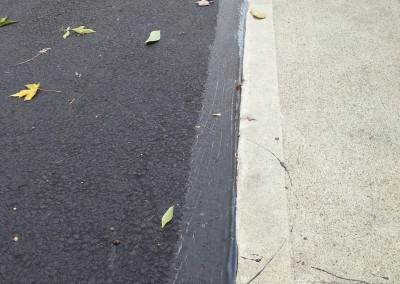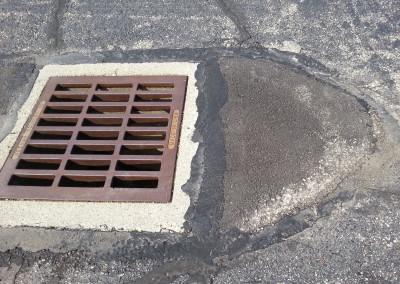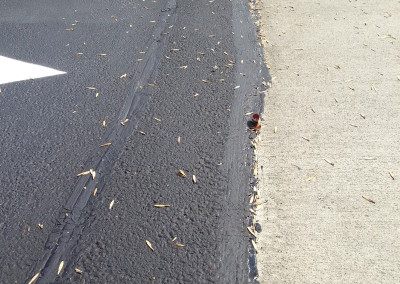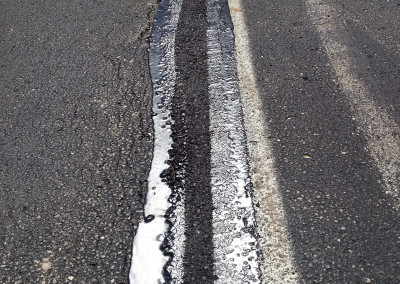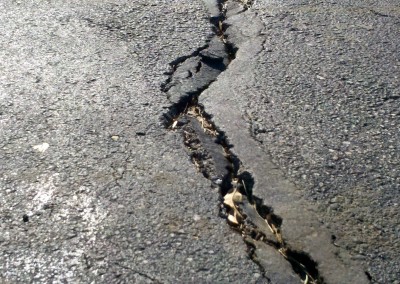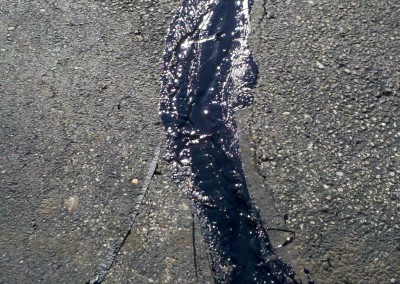Crack Sealing
We offer complete pavement maintenance services.
Why do cracks form?
A hardened surface, like asphalt, that is spread over an area larger than about 100 sq ft of the earth’s surface is subject to forming cracks, for a number of reasons: 1) insufficient type and thickness of the asphalt; 2) insufficient compaction of the asphalt; 3) improper or poorly installed support structure/sub-base; 4) or simply movement of the earth beneath the sub-base.
Why should you care about cracks?
Cracks that form in the asphalt need to be addressed as soon as they form. If left unattended, they allow water to intrude to the sub-base, or compacted stone structure. This water softens the compaction of the stone, which compromises the weight that the stone can support. Vehicle weights and stresses on a soften sub-base cause cracking in the asphalt surface above.
Also, additional cracking forms from the saturated sub-base being exposed to freezing and thawing temperatures. This freezing and thawing of the water-saturated sub-base causes the raising and lowering of the sub-base and therefore the raising and lowering of the asphalt surface that it supports.
What should you do about cracks?
Simply stated, cracks need to be filled and sealed to prevent water intrusion.
How should cracks be filled?
There are two basic types of material that can be used to address cracks: 1) a cold pour product or; 2) a hot applied product.
What’s the right material to use?
Hot pour product is more of a permanent product used in commercial applications, such as parking lots.
What product is used by Smith & Sons?
I’m glad you asked. The majority of the jobs performed by Smith & Sons are higher-traffic commercial parking lots and so we primarily use a hot-applied product.
Hot pour is a rubberized tar product, similar to roofing tar, that has been formulated with a rubber product to provide flexibility. This type of product comes in a solid form and is melted by heat to around 375 degrees, and applied by using a pour pot or a banding machine that contains the material in a 3” band over the crack.
What’s the right process for applying crack-fill material?
To properly fill a crack, the crack must be free of foreign material, such as leaves, sticks, whirly-gigs, etc. So, we blow the cracks clean to allow the material to fill the crack without obstruction.
Some cracks are open all the way through the asphalt to the sub-base, which can be as much as 3-6 inches. The extreme depth of the crack can be too deep for the crack-fill material to support itself. So, we use sand to fill the crack to within ½” of the surface and fill the remainder with hot-pour rubberized tar.
Some of Our Work…
Request a FREE Quote
“The team at Smith and Sons always leaves us with a great looking, seal coated and striped parking lot. They are easy to work with, and when they say they will do something you can believe they will.”
“This is the second time we have used Smith and Sons to repair and seal our parking lot, and they did an excellent job. We are very pleased with their work, and highly recommend to anyone looking for a high quality, professional vendor. “
Let Us Help You with Your Next Pavement Maintenance Project
We can help!

